Display, Case and Peripherals
We have covered the core components for all of the systems, so now you need a box to put everything in, a power supply to get everything running, as well as a display, speakers, keyboard, and mouse. If you already have a decent computer system, you might want to reuse some of your existing parts, but it might be easier to simply buy a new case and power supply so that you can sell off your old system (or add a second full computer as the case may be). We have four configurations for you to choose from, ranging from an upper midrange selection all the way up through the no holds barred ultra high-end setup. While all four could be used with any of the computer systems listed in this guide, the higher-end parts you choose for your main components the more you should probably spend on the remainder of the system. Of course, you do not need to use all of the choices from one table; if you want to get an ultra high-end display but use baseline components for the rest of your system, there's nothing stopping you from doing so. Mix and match as you see fit!
| Base High-End Case and Accessories |
| Display |
Acer AL2216Wbd 22" 5ms 1680x1050 |
$339 |
| Case |
Antec Solution SLK3000-B |
$52 |
| Power Supply |
Seasonic S12-500 500W |
$113 |
| Keyboard and Mouse |
Microsoft Comfort Curve 2000 with Optical Mouse |
$28 |
| Speakers |
Logitech X-530 5.1 |
$55 |
| Total |
$587 |
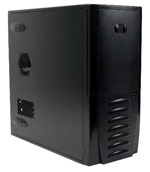 |
Our baseline recommendation has many similarities with the upgraded midrange configuration we used in our last buyers guide, including the use of the same 22" widescreen display from Acer and the Microsoft keyboard and mouse combo package. We have chosen a slightly different case and power supply, although the choice of case is going to be largely based on personal preference. The Antec SLK-3000 case is your classic steel Antec chassis with a black paint job: it's durable, easy to work with, and it includes a reasonably quiet rear 120mm fan with an additional 120mm fan mount at the front of the case. A second fan isn't absolutely required, but adding a lower RPM fan can help ensure that your components stay cool. As we are using multiple graphics cards in all the configurations, we felt a good-quality power supply was a required starting point. While just about any 500W or higher rated PSU is going to be sufficient, we wanted something relatively quiet that we were confident would last a long time.
(Ed: And we changed from the original PSU choice due to user feedback...) We selected the Seasonic S12-500 to go with the Antec case, as Seasonic is one of the most highly regarded PSU manufacturers around. 500W might seem low to some, but this is truly a 500W PSU with a high efficiency; it can really output 500W to all the peripherals - more than enough for the systems listed here today - and it will do so without drawing substantially more power from the outlet. We also added some basic 5.1 speakers from Logitech - something we omitted in the previous buyers guide.
(Ed: Sorry!) For the basic builds, we feel most users will be fine using integrated audio, so we are not listing a sound card, but you can see some options below.
| Upgraded High-End Case and Accessories |
| Display |
Acer 24" AL2416Wd 6ms 1920x1200 |
$686 |
| Case |
LIAN LI PC-7B plus II |
$100 |
| Power Supply |
OCZ GameXStream OCZ700GXSSLI 700W |
$130 |
| Keyboard and Mouse |
Logitech Keyboard and Mouse - Wireless + Rechargeable |
$56 |
| Sound Card |
Bluegears b-Enspirer |
$106 |
| Speakers |
Cyber Acoustics A-5640rb 5.1 |
$100 |
| Total |
$1178 |
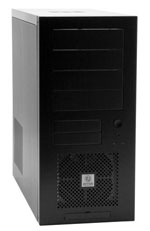 |
Stepping up one notch, we've moved up to a 24" LCD from Acer, sporting a native 1920x1200 resolution with a fast 6ms response time. With all the money spent on upgraded graphics cards, there's no point in not having a high-end display to help keep them busy! For the case, we chose the Lian Li PC-7B black aluminum enclosure. Lian Li has always been known for building high-quality cases, and this is no exception. Like the Antec we selected above, it includes two 120mm fan mounts at the front and rear of the case, only this time both fans are included. We upgraded the power supply one more notch to a 700W model, this time going with the OCZ GameXStream 700W as it is presently the lowest priced quality 700W PSU available. Thermaltake, Fotron Source, and several other manufacturers offer similar power supplies - in fact, most of these power supplies are simply tweaked Fotron Source designs, so if you can find one of those for less money there's little difference other than the name on the side of the PSU. For the input devices, we switched to a wireless Logitech keyboard and mouse, with the mouse including a recharging stand. Some people have other preferences as far as keyboards and mice go, so get what you're comfortable with.
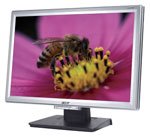 |
We've also upgraded the speakers, and we added a Bluegears b-Enspirer soundcard. A lot of you may not have heard of this soundcard yet, but it is definitely one to consider. It uses the new C-Media Oxygen HD CMI8788 audio chip and features real-time Dolby Digital and DTS encoding support. This is a great soundcard for anyone looking to put together an HTPC system, or anyone looking for better than integrated audio without the Creative Labs name. Feel free to upgrade the speakers to something better or use your home stereo system in order to take full advantage of this soundcard. If you're primarily concerned with gaming audio, the Sound Blaster X-Fi is still the better choice, but for light gaming and home theater use the Bluegears b-Enspirer is an excellent alternative.
| Upgraded #2 High-End Case and Accessories |
| Display |
Dell 2407WFP 24" 6ms GTG 1920x1200 |
$720 |
| Case |
Antec Performance I P180 |
$125 |
| Power Supply |
OCZ GameXStream OCZ700GXSSLI 700W |
$130 |
| Keyboard and Mouse |
Logitech MX3000 Wireless + Laser Mouse |
$63 |
| Sound Card |
Creative X-Fi XtremeMusic |
$114 |
| Speakers |
Logitech Z-5300e 5.1 |
$139 |
| Total |
$1291 |
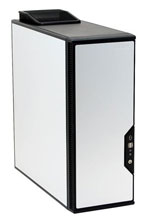 |
Most of the differences between this upgraded version and the previous upgraded version are slight. We've chosen the Dell 2407WFP 24" LCD, which we think looks a little bit nicer than the Acer, and it also includes a better stand and an integrated flash card reader. Are any of those changes required? No, but some of you will prefer the Dell display, and if you wait you might actually be able to find it for less money when Dell puts on one of their classic sales. We changed the case to an Antec P180, going for silver this time because not everyone likes black. (Make sure you get an appropriate optical drive faceplate if you choose this case!) The power supply remains the same, while we ditched the rechargeable wireless mouse for a wireless laser mouse. Finally, we upgraded the speakers another step to the Logitech Z-5300e. A little bit more money, a little bit better sound quality. We also chose a more gaming-centric sound card in the Creative Sound Blaster X-Fi XtremeMusic, which we would assume all of you are familiar with by now.
| Ultra High-End Case and Accessories |
| Display |
Dell 3007WFP 30" 11ms GTG 2560x1600 |
$1450 |
| Case |
Cooler Master Stacker 830 |
$243 |
| CPU Cooling |
Scythe Infinity |
$60 |
| Power Supply |
SilverStone SST-ST85ZF 850W |
$279 |
| Keyboard |
Microsoft Natural 4000 |
$43 |
| Mouse |
Logitech MX Revolution |
$90 |
| Sound Card |
Creative X-Fi Platinum |
$175 |
| Speakers |
Logitech Z-5500D 5.1 Digital Speakers |
$223 |
| Total |
$2563 |
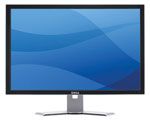 |
The Ultra accessories package is a great complement to the ultra high-end Intel configuration. In a similar fashion, we have maxed out just about every component, sometimes at significant expense. We have chosen the Cooler Master Stacker 830 for our top configuration, as it has a spacious interior and an attractive and easy to use design that's suitable for even the most high-end configurations. Yes, you could buy a different case, and as we often state what case is "best" is largely a matter of personal preference. For the display, the best computer deserves the best LCD currently available, so we have selected the Dell 3007WFP 30" LCD with a native 2560x1600 resolution (or WQXGA if you prefer). Definitely don't skimp on your GPU selection if you choose to go with this large monitor and plan on gaming at the native resolution!
We also jumped up to an 850W power supply from Silverstone, which costs almost twice as much as the 700W OCZ.
(Ouch!) However, with rumors circulating that the next generation high-end graphics cards from NVIDIA and ATI will
require even more power than the current models, we felt that any ultra high-end system needed a power supply equal to the task. (You could jump up to a PC Power & Cooling Turbo-Cool 1000W PSU if you really want to go extreme, but be prepared to fork over nearly $500 for the privilege!) The soundcard has been bumped up to the platinum edition of the X-Fi, which adds a 5.25" bay that provides front panel connections but is otherwise the same as the other X-Fi cards. For the speakers, we moved up to the Logitech Z-5500 digital speakers, eliminating the interference that can be generated by all of the electronic noise inside your computer case. Finally, for the user interface we went with Microsoft's Natural 4000 keyboard and coupled that with
Logitech's Revolution MX mouse, both of which are arguably best in class peripherals. However, personal preference still plays a role, so you might want to try out these devices in person at your local computer store.
CPU Cooling
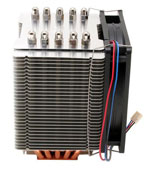 |
One item that we added to the ultra configuration that is worth considering for any of the system builds is an aftermarket heatsink to help keep your processor cool. If you are looking for the HSF that we currently feel is the best air cooling available, look no further than the Scythe Infinity. It is absolutely massive and definitely won't fit in every computer case out there - or on every motherboard - but if you are serious about overclocking then the $65 is money well spent. Another good alternative is the Tuniq Tower 120, which is unfortunately out of stock everywhere right now. We consider the Scythe Infinity to be the better CPU cooler, but the Tuniq Tower 120 is very good and might cost a bit less. Another competing solution (that's just as large as the Infinity) is the Thermalright Ultra-120, which typically equals the other two in cooling prowess and may cost a bit more or less depending on where you find it. For cases and motherboards that aren't quite as spacious, Zalman and Thermalright offer reasonably priced CPU coolers that will still outperform the stock heatsinks from both AMD and Intel.

















45 Comments
View All Comments
limiter - Tuesday, October 10, 2006 - link
I read an article on Toms or HardOCP (that I can't find now) which said they had problems getting one of their DVD drives to work on a P965 ASUS board, but a lot of what I've read comes from Newegg item comments like these for the ASUS P5B Deluxe:For the ASUS P5W DH Deluxe
I've read some other forum comments about DVD problems on ASUS P965 mobos, but I can't find them right now. If I run across them again I will update. I'm not saying this is a bad motherboard or ASUS is a bad company, and any of this could be user error, unrelated bad hardware, or have been corrected by bios updates. I guess I just get the impression there are more people having issues with memory and DVD burners than usual. Nothing I think needs a too much attention. I am happy to see memory was tested for the article, I look forward to the future article mentioned above on this topic!
JarredWalton - Tuesday, October 10, 2006 - link
Of course, all the boards are using 975X in this guide and not P965. The problem likely stems from the fact that none of the P965 boards have an Intel IDE controller, since ICH8 doesn't provide one. (Stupid... but that's a topic for another day.) Most boards use third-party controllers can order to offer IDE support, and some of the initial BIOS revisions were very flaky in memory and IDE support. Beyond that, I can't think of anything specific that would be causing issues for people.JarredWalton - Monday, October 9, 2006 - link
The RAM and motherboard combinations have all been tested (as far as I'm aware) by Gary Key and/or Wesley Fink. Those choices were made with extensive input from Wes and Gary. That's the major sticking point in terms of compatibility - and P965 memory compatibility has improved a lot with the latest BIOS revisions. However, it should be noted that we strongly recommend setting memory timings (and voltages) manually for most high-end enthusiast systems. The SPD settings should work and allow the systems to POST, but they are not optimal by any means. Hope that helps - Gary or Wes might be able to chime in with specific testing results for the RAM+Mobo, although I think there's an article in the works that will cover that aspect regardless.Missing Ghost - Monday, October 9, 2006 - link
Is there really a good reason to choose AM2 over 939? I think the motherboards for 939 are more mature.JarredWalton - Monday, October 9, 2006 - link
If you're looking to use older components (like existing DDR RAM), 939 is still fine. That's what I still use for my personal system (mostly because I don't have the time to get a full Core 2 Duo up and running, and I likely wouldn't notice the difference in performance for the apps I run most). If you're building a full new system, there's no reason to get 939 anymore.Think DDR2 prices are bad? Take a look at quality DDR - it's no better, and you won't get 1:1 overclocks to DDR-667 or higher with any RAM. $250 or so will get you DDR2-800 that can run faster than any 1:1 overclock on AM2 will need. There will also be no future platforms for DDR (other than budget offerings from maybe SiS or VIA).
Anyway, AM2 launched in a state that was nearly as mature as 939, and it has quickly matched it overall, if not exceeded it. The prices are about the same, AM2 typically hold a 5% advantage in performance over 939 (for equivalent CPU and RAM speeds), and hopefully AMD will do quad cores on AM2 in the future - 939 is now EOL'ed, and DDR is in a similar boat. I believe the last production runs of DDR will complete in early 2007, and then pretty much everything will shift to DDR2 or later RAM production.
mostlyprudent - Monday, October 9, 2006 - link
Wow! You really covered your bases and made it clear that there are still plenty of options out there to choose from. Nicely done, although it leaves little room for discussion.One Guide I would love to see in the future is one that attempts to find the best balance between noise and performance. There are plenty of sites that talk about silencing a PC, but they tend to cripple performance at some level. Anandtech has looked at some components in this respect (i.e. video cards and cases), but it would be great to see the whole package put together. Maybe it's in the context of the best all-purpose PC for those who cannot afford a separate rig for gaming, one for family use, one for an HTPC, a media server, etc.
MadBoris - Monday, October 9, 2006 - link
Glad you guys offered so many alternatives through the guide. I like a reference of what the current best components are in each field, but I end up choosing certain best components. So the alternatives, throughout the guide, were very nice.Thanks for these buyers guides, it will really help alot of people out with core 2 duo upgrades and upcoming next gen GPU's. Thanks alot guys.
Baked - Monday, October 9, 2006 - link
What's with the Ultra High End system w/o a Seasonic or PCP&C PSU?And no loving for the Thermalright Ultra-120? Unlike other companies, Thermalright knows how to innovate instead of just blowing up their products. You can get the Ultra-120 w/ a Yate Loon D12L for less than $55 and it'll perform better if not on par w/ the Scythe Infinity, AND it'll stay attached to the motherboard. You expect people to buy your $65 but you can't come up w/ a better mounting system other than the one used by Intel's retail HSF? Poleeeeeeeese.
JarredWalton - Monday, October 9, 2006 - link
See above comment - the Kingwin has been upgraded to a Seasonic S12-500 now. I should have figured the PSU police would come knocking if I didn't spend at least $100 on a "high-end" PSU. Honestly, if you don't plan on overclocking and adding a lot of extras, the vast majority of 500-600W PSUs will work fine. Some are quieter, some are more efficient, but most will handle a moderately high-end configuration.BTW, I'm typing this on a system configured with:
ASUS A8R32-MVP
Athlon X2 3800+ OC'ed to 2.2GHz (4600+ equivalent)
X1900 XT + X1900 CF GPUs
2x1024MB OCZ DDR-500 3-3-3-8-1T
320GB WD HDD
160GB Samsung HDD (secondary storage)
Pioneer DVR-110D
Antec SLK-3000B case
...And a Kingwin 600W PSU
I bought the Kingwin several months ago on a whim - I needed a PSU fast after an Antec 400W unit failed, and the local shops didn't have a great selection. Note that the Antec PSU was *not* used in this system config! LOL - CrossFire on an Antec? Not for me!
The system is not extremely quiet... but then that's almost impossible with dual X1900 cards. Full load the system stays well under 500W, and I haven't had any issues with stability whatsoever. Upgrading the system to socket AM2 and 7900GTO cards would drop power requirements, so I still fully stand by the original choice of the 600W Kingwin as a reasonable "budget high-end" PSU. Will it fail gracefully if I exceed the limits of the PSU? No idea - I don't intend to find out either. :)
yyrkoon - Tuesday, October 10, 2006 - link
Its not about the brand name Jarred, you can find a reasonable PCP&C PSU, hell, you'll pay more just because of SLI 'certification'. Anyhow, sometimes, someone may want a longer hold time, or want rock solid rails, or possibly better efficiency (although seasonic may have PCP&C beat here, depends on models).You mentioned something about re-branding, however im not so sure thats completely true. 99.9% of all PSUs probably are made in one of 12 plants in China, HOWEVER, parts, support, , and specifications are not always interchangeable.
I didnt see how much your KINGWIN PSU was, but something that hits me as more than slightly funny, is why spend 260 us on a motherboard, 300 + on a CPU, 250-300 on memory, and get cheap on the PSU ? I think you'll find that PCP&C PSUs are more efficient, have a much longer hold time, and should exibit a much more solid rail supply. Lets not forget that PCP&C PSUs are rated at 40C, and not 25C like alot of common PSUs on the market. (not everyone lives where its cold, or even cool.)*shrug*